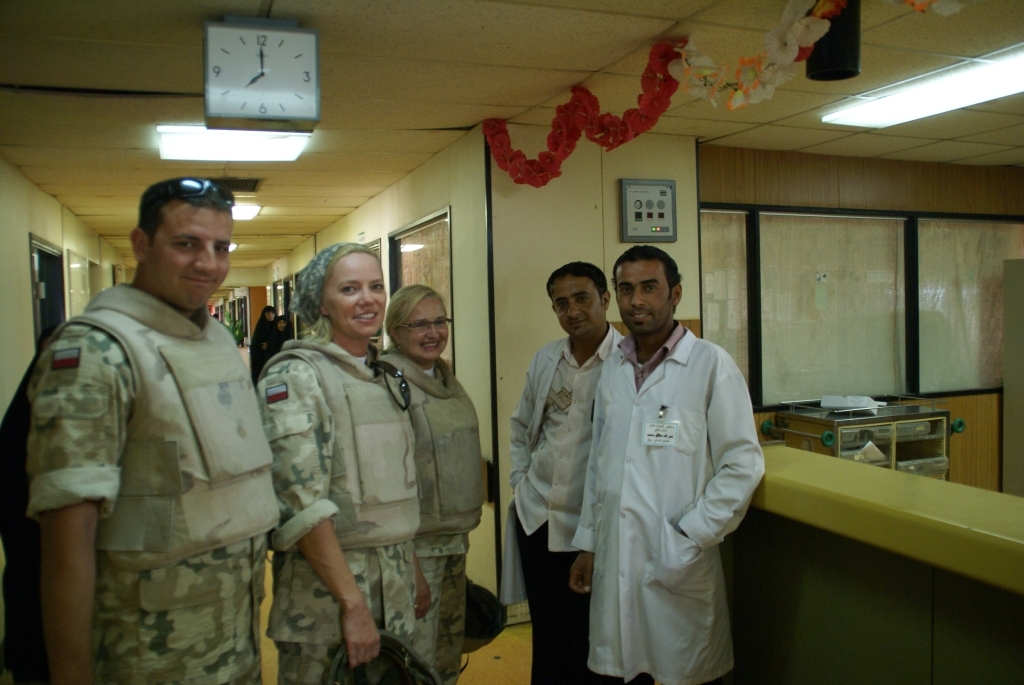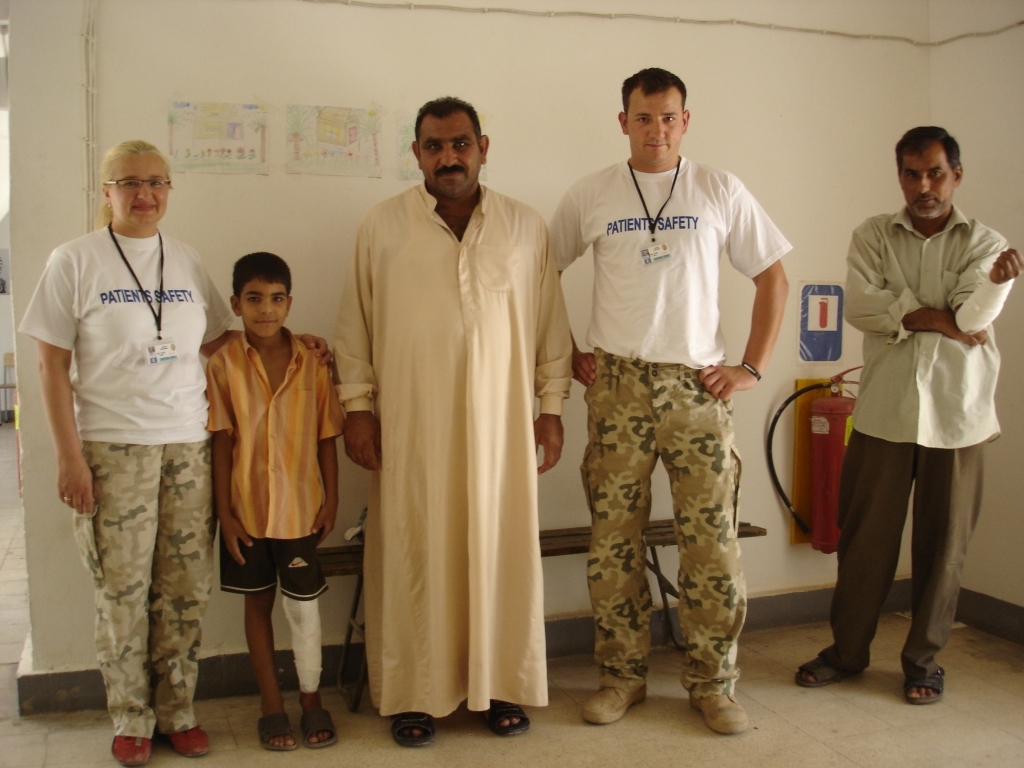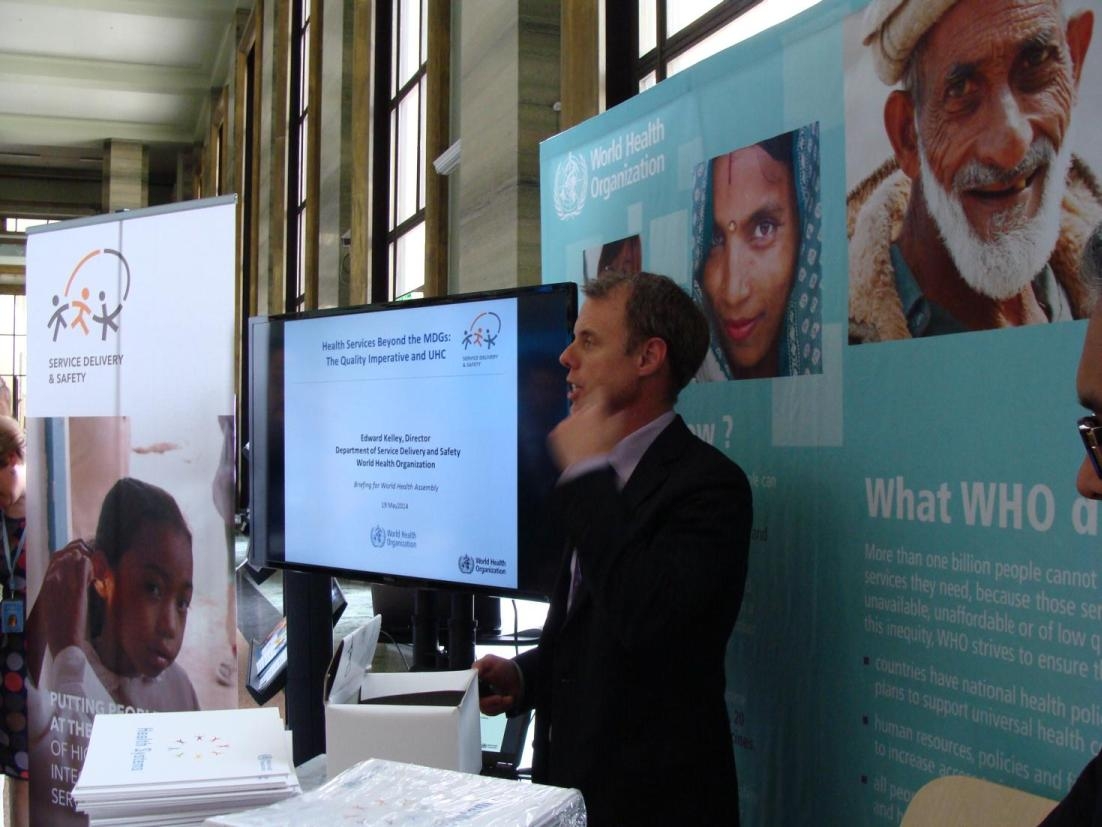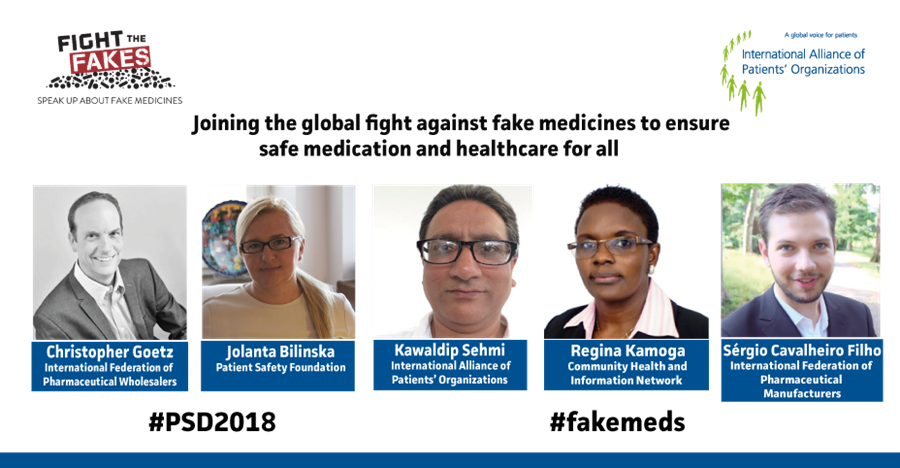Protecting patients from preventable harm must be the priority of all healthcare institutions. Proven guidelines exist such as those for hand hygiene, surgical check lists, prescribing of medicines, but commitment to concrete implementation of guidelines remains a significant challenge for healthcare providers and puts patients at great risk of preventable death and injury every day. As part of the legal prescription of the Patients’ Rights in Cross-border Healthcare Directive, the European Parliament and Council demanded “systematic and continuous efforts should be made to ensure that quality and safety standards are improved in line with the Council Conclusions and taking into account advances in international medical science and generally recognised good medical practices as well as taking into account new health technologies.”1
[TBC] (together with…. representing # of patients), call on health authorities and policymakers, healthcare professionals and healthcare providers, to sign up to the Pact for Patient Safety – a pledge to implement the following procedural and material standards of practice in order to better protect patients from preventable harm as prescribed by the legally binding directive on Patients’ Rights in Cross-border Healthcare.2
Procedural Commitments:
- Involve patients: Each healthcare provider to systematically and structurally involve patients, or their independent representatives, in all aspects of the patient safety strategy
- Publish data: Each healthcare provider to systematically collect data on key parameters of patient safety (including usage of medicines and medical technology products) and publicly release figures every year
- Provide access: Access to full patient records for patients
- Incentivise safety: Make management accountable for health systems and provide effective redress and compensation rights for patients
- Raise awareness: Annual report on patient safety by the Minister of Health before the national parliament and include patient safety on agenda of all meetings in healthcare
Material Commitments:
Clear and legally binding guidelines at national and regional level on:
- Patient informed consent for all treatments.
- Domains of risk to patients (e.g. hand hygiene controls)
- Evidence-based use of medicines and medical technologies.
- Use of approved treatments and technologies according to the medical need of the patients.
- Sufficient healthcare staffing to support patient safety.
The costs of not committing to the above are staggering. Continuing the current trends equates to:
- 1 in 10 patients harmed while receiving care3
- 1.4 million people suffering worldwide at any given time from infections acquired in hospitals (37,000 deaths in the EU annually)4
- Between €4.65 billion and €22.5 billion per country every year due to litigation, infections acquired in hospitals, lost income, disability and medical expenses5
- Sepsis, which arises due to infections and poor patient safety, affects approximately 377 people per 100,000 in the EU/US. There is a higher incidence of sepsis than stroke, cancer (prostate, breast and lung combined), heart and HIV cases and costs more than 11€ billion per year (and continues to rise).67
Explanatory Note
Pact for Patient Safety
The signatories to the Pact for Patient Safety recognise that while more steps need to be taken to ensure safe delivery of healthcare for all patients, there are commitments which can be made from authorities, policymakers, professionals and providers to ensure that specific practices are enforced which will better protect patients from unnecessary harm.
Signatories to the Pact for Patient Safety pledge their support of the material and procedural commitments in order to prevent harm and/or unnecessary risk to patients.
Procedural Commitments:
- Involve patients: Each healthcare provider to systematically and structurally involve patients, or their independent representatives, in all aspects of the patient safety strategy.
- This issue addresses the need for patient representation throughout the development of patient safety strategies at all levels to ensure the patient perspective is reflected. In order to empower patients, Member States have called for the involvement of patient groups in patient safety strategies in the Council Recommendations on patient safety including the prevention and control of healthcare associated infections (2009). However, patient involvement in policy development has only formally been adopted by 14 Member States in the EU (specifically in AT, DE, DK, EE, ES, FI, FR, IE, IT, LT, NO, SE, SK, UK). How patient involvement has been implemented still requires validation.8 9
- Publish data: Each healthcare provider to systematically collect data on key parameters of patient safety (including usage of medicines and medical technology products) and publicly release figures every year.
- Data collection of patient safety parameters and research into patient safety is the key to benchmarking the reality of both safe and harmful patient experiences within domains of risk such as clinical, medicines, management and equity of access to healthcare. Research into patient safety is lacking, with only 10 Member States having a dedicated national research programme (specifically BE, DE, ES, FR, HU, IE, IT, NL, SE, UK) and few report on the dissemination and learning of adverse events.1011 With more information about healthcare providers at their disposal, patients can exercise their rights by making more informed decisions about their safety. Information, however, is not the end result – information should lead to consistent and regular decision-making.
- Provide access: Access to full patient records for patients
- Having full access to records allows patients to play a greater role in their own safety while building trust with healthcare professionals. Patients who are more knowledgeable about their conditions are more likely to have an open dialogue with their professional about the content of a patient record – ensuring informed consent, compliance with treatment regimes, as well as full disclosure about treatment, significantly reducing patient harm.12
- Incentivise safety: Make management accountable for health systems and provide effective redress and compensation rights for patients
- In order to incentivise safety, managers of healthcare systems should be accountable for their decisions just as we hold nurses, doctors and allied professionals to account for their clinical decisions. Each patient should have the right to take action whenever he/she has suffered harm as well as the right to receive sufficient compensation whenever he/she has suffered physical, moral, or psychological harm cause by a health service treatment.13 Patient protection from unnecessary harm must be embedded across all areas of healthcare delivery with clear and specific guidelines on reporting and redress for patients. The redress system should lead to embedding a culture of safety.
- Raise awareness and improve accountability: Annual report on patient safety by the Minister of Health before the national parliament and include patient safety on agenda of all meetings in healthcare
- This issue addresses the extent of priority given to patient safety in policy making and the knowledge held by decision-makers about the real versus perceived risks associated with receiving care.14 Though many patient groups raise awareness about safety concerns, facts and figures reported by the government to the Parliament and all citizens require significantly greater detail, profile and scrutiny. Patient safety should be the top priority on every health agenda.
Material Commitments: Clear and legally binding guidelines at national and regional level on the following:
- Patient informed consent for all treatment
- The rights of patients to be “fully informed of treatment and to consent to treatment” are reinforced by both the Council Conclusions of 2 June 2006 on Common Values and principles in European Union Health Systems15 and the European Charter of Patients Rights.16 Informed consent includes providing all information about treatment, the risks and benefits, as well as alternative treatment options.
- Domains of risk to patients
- The European Centre for Disease Prevention and Control estimates that there are approximately 37,000 deaths annually in the EU due to healthcare associated infections (HCAIs).17 Undertaking regular prevalence surveys on domains of risk (medicines, clinical, management and equity) and implementing hand hygiene controls can prevent almost all HCAIs in health settings,18 avoiding complications for patients, longer hospital stays and unnecessary death.
- Evidence-based use of medicines and medical technologies
- Medicines and medical technologies provide opportunities to improve patient outcomes and protect patient safety if used correctly and in line with official guidance on which products are appropriate for which treatments. It is therefore imperative, that healthcare professionals and health institutions follow evidence-based clinical guidelines on use of such products for treatment of patients to decrease any potential harm associated with the delivery of care.
- Use of approved treatments and technologies according to the medical need of the patient
- The European regulatory system is based on the comprehensive assessment and approval of medical products which are accompanied by detailed descriptions of how medicines and technologies should be used. To ensure safe and patient-centred care, continuous training of healthcare professionals on new medicines and technologies must be a priority. Any prescribing for treatment beyond approved use, should be done so only with the best medical interests of the patient in mind and with the patients’ fully informed consent.19
- Sufficient healthcare staffing to support patient safety
- There must be an appropriate amount of qualified healthcare professionals staffed in each institution to ensure the highest level of quality of care for the patient. Healthcare professionals are essential for reducing risks to patients as increases in adverse events have been directly correlated to low levels of staffing.20 Effective, formal staffing plans must be implemented in all healthcare institutions with staffing plans created by individuals trained to make these complex decisions.21
Background
In its simplest terms, the World Health Organization (WHO) defines patient safety as “the prevention of errors and adverse effects to patients associated with health care.”22 Preventing harm to patients is challenging as risk will always be involved in the delivery of healthcare, but harm can be reduced by following regulations, guidelines and procedures already embedded in most patient safety programmes at local, regional and national level within EU Member States. The current risk to patients remains great, for example:
- There is a 1 in 1,000,000 chance of a traveller being harmed while in an aircraft. In comparison, there is a one in 300 chance of a patient being harmed during health care.23
- 4 million patients a year acquire an infection while receiving care (EU only)24
- 37,000 preventable deaths per year in the EU due to hospital acquired infections25
The recent European Commission report to the Council on the basis of Member States; report on the implementation of the Council Recommendations on patient safety including the prevention and control of healthcare associated infections (2009) shows the significance of embedding patient safety in healthcare policies. It reports that while all countries have implemented patient safety as a priority in public health policies, the extent of policy implementation remains unclear. The Commission reports that 25 countries have designated a competent authority for patient safety and 24 countries are encourage training on patient safety in healthcare settings. However, there is a lack of quantitative data underlining these statistics and ambiguity persists as to how deep and comprehensive these measures are.26
Both the WHO and the European Commission are prioritising patient safety through various campaigns and projects in order to encourage and direct health systems to better protect patients. The WHO has focused on implementing hand hygiene27 and safe surgical practices28 throughout health systems worldwide, and the European Commission is currently supporting a Joint Action on patient safety and quality of care which aims to broaden the implementation of the Council Recommendations on patient safety including the prevention and control of healthcare associated infections (2009). Providing immense knowledge and support, these initiatives are fostering greater patient safety in health institutions.
However, patients continually experience situations where guidelines, procedures and protocols are not followed resulting in harm to patients. Harm can be widespread – from not obtaining the informed consent of patients, to not providing full disclosure about treatment, to obstructing effective redress and compensation rights – the safety of patients remains compromised in many areas. Moreover, we can only estimate the extent of adverse harm suffered by patients as only 9 Member States routinely collect information about errors and adverse events.29
Adverse events and errors cause death and injury to patients and consume scarce resources while undermining the fragile domain of patient trust. Adverse events also violate the rights of patients to health protection which are guaranteed under the Charter of Fundamental Rights of the European Union,30 and further reinforced in the Council Conclusions of June 2006 on Common Values and principles in European Union Health Systems31 and the European Charter of Patients Rights.32
1 Official Journal of the European Union. Directive 2011/24/EU of the European Parliament and of the Council of 9 March 2011 on the application of patients’ rights in cross-border healthcare. http://eur-lex.europa.eu/LexUriServ/LexUriServ.do?uri=OJ:L:2011:088:0045:0065:EN:PDF
2 Ibid.
3 World Health Organization. Fact File, 10 Facts on Patient Safety. http://www.who.int/features/factfiles/patient_safety/patient_safety_facts/en/index3.html
4 Ibid, Fact 4.
5 Ibid, Fact 8.
6 Sepsis: Hall MJ, Williams SN, DeFrances CJ, Golosinskiy A. Inpatient care for septicemia or sepsis: A challenge for patients and hospitals. NCHS data brief, no 62.Hyattsville, MD: National Center for Health Statistics. 2011. http://www.world-sepsis-day.org/WSD/en/Learn/Sepsis+Facts?sid=BRtcgiv1Hsh3AXZtYOxYbw&iid=6
7 http://report.nih.gov/categorical_spending.aspx http://www.kff.org/hivaids/7029.cfm
8 Official Journal of the European Union. European Commission report to the Council on the basis of Member States; report on the implementation of the Council Recommendations on patient safety including the prevention and control of healthcare associated infections (2009). Article 2, 2.1, 2.1.3 on general patient safety. http://ec.europa.eu/health/patient_safety/docs/council_2009_report_en.pdf
9 Commission staff working document. Detailed analysis of countries’ reports on the implementation of the Council Recommendations on patient safety including the prevention and control of healthcare associated infections (2009). 13 November 2012. http://ec.europa.eu/health/patient_safety/docs/council_2009_report_swd_en.pdf
10 Ibid; 13.
11 Ibid, 29.
12 According to the European Commission, a survey of European hospitals showed that while 81% of hospitals have instituted electronic health records, only 4% of patients are granted access to the online record. eHealth action plan 2012-2020: Frequently Asked Questions. http://europa.eu/rapid/press-release_MEMO-12-959_en.htm?locale=en
13 Active Citizenship Network. EU Charter of Patients Rights. Brussels, 2002. http://www.activecitizenship.net/patients-rights/projects/29-european-charter-of-patients-rights.html
14 Eurobarometer 2010 showed that 50% of respondents felt that they could be harmed while receiving care.
15 Official Journal of the European Union. Council Conclusions of 2 June 2006 on Common Values and principles in European Union Health Systems. 2006/C 146/01.
16 Active Citizenship Network. EU Charter of Patients Rights. Brussels, 2002. http://www.activecitizenship.net/patients-rights/projects/29-european-charter-of-patients-rights.html
17Official Journal of the European Union Council Recommendation of 9 June 2009 on patient safety including the prevention and control of healthcare associated infections.
18 World Health Organization. Clean Care is Safer Care Campaign. http://www.who.int/gpsc/en/index.html
19 Irish Patients Association. Patient Safety, Patients’ Rights and Off-Label Prescribing: Findings of a Europe-wide Survey Among 150 Patient Groups. March, 2012. http://irishpatients.ie/news/wp-content/uploads/2012/03/IPA_Off_Label_WEBr-1.pdf
20 Canadian Health Services Research Foundation. Staffing for Safety: A synthesis of the evidence on nurse staffing and patient safety. September, 2006. http://www.ccpnr.ca/PDFs/Nurse_Staffing_and_Patient_Safety_2006.pdf
21 Ibid, 3.
22 World Health Organization. Genomic Resource Centre, Patient Safety. http://www.who.int/genomics/public/patientrights/en/
23 World Health Organization. Fact File, 10 Facts on Patient Safety. http://www.who.int/features/factfiles/patient_safety/patient_safety_facts/en/index3.html
24 European Centre for Disease Prevention and Control. Core competencies for infection control and hospital hygiene professionals in the European Union. http://ecdc.europa.eu/en/publications/Publications/Forms/ECDC_DispForm.aspx?ID=1076
25 Ibid
26 Official Journal of the European Union. European Commission report to the Council on the basis of Member States; report on the implementation of the Council Recommendations on patient safety including the prevention and control of healthcare associated infections (2009). Article 2, 2.1, 2.1.1. on general patient safety. http://ec.europa.eu/health/patient_safety/docs/council_2009_report_en.pdf
27 World Health Organization. Clean Care is Safer Care Campaign. http://www.who.int/gpsc/en/index.html
28 World Health Organization. Safe Surgery Saves Lives Campaign. http://www.who.int/patientsafety/safesurgery/en/index.html
29 Ibid; 2.1.2
30 Official Journal of the European Communities. Charter of Fundamental Rights of the European Union. 2000/C 364/01: 18.12.2000.
31 Official Journal of the European Union. Council Conclusions of 2 June 2006 on Common Values and principles in European Union Health Systems. 2006/C 146/01.
32 Active Citizenship Network. EU Charter of Patients Rights. Brussels, 2002. http://www.activecitizenship.net/patients-rights/projects/29-european-charter-of-patients-rights.html

























































